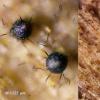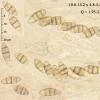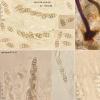
04-11-2025 09:07
Hello.A suspected Hymenoscyphus sprouting on a thi

04-11-2025 12:43
 Edvin Johannesen
Edvin Johannesen
Hi! One more found on old Populus tremula log in O

03-11-2025 21:34
 Edvin Johannesen
Edvin Johannesen
These tiny (0.4-0.5 mm diam.), whitish, short-stip

28-10-2025 15:37
Carl FarmerI'd be grateful for any suggestions for this strik

03-11-2025 16:30
 Hans-Otto Baral
Hans-Otto Baral
Hello I want to ask you if you have found this ye

28-10-2025 19:33
 Nicolas Suberbielle
Nicolas Suberbielle
Bonjour à tous,Je voudrais votre avis sur cette r
These very small (up 70 125 microns), superficial, blackish, roundish and pilose ascomata grew on decorticated wood of Quercus ilex. Could be Capronia pilosella/Herpotrichiella moravica with so long hairs up to 210 mic. long? Are these names synonims?
Thanks again
Hopefully this helps,
Regards, Eduard

hairs/setae are not Capronia-like, but typical for Chaetosphaeria species. Are they realy belong to the fruitbodies or are they just surrounding them? I had C. pilosella many times, always with very small spores and distinct black acute setae of ~60-80µm length.
regards,
björn
Hi Björn
Yes. the hairs undoubtedly belong to the ascomata. And yes, my older collections of Capronia pilosella have blackish, short acute setae as you say.
Thanks again



